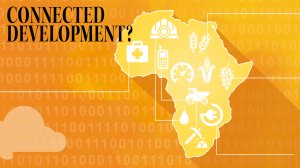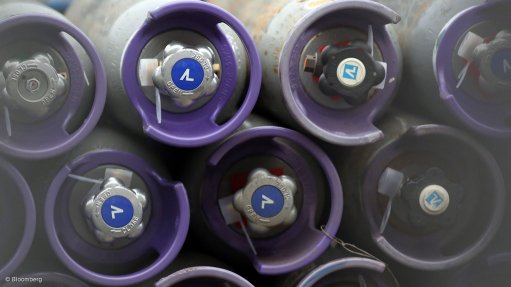Strong developmental flavour to Africa’s tentative adoption of IoT solutions
The concept of the Internet of Things (IoT) is beginning to penetrate Africa, where adoption, albeit patchy and hesitant, is underpinned primarily by a developmental agenda, as well as efforts by firms to bolster productivity and efficiency.
The continent’s unique socioeconomic and business challenges and widespread industry fragmentation are forcing local firms to be more creative than their global counterparts in developing relevant IoT solutions.
“This is one reason why information technology leaders see the adoption of IoT as being more critical for their future success,” says Vodacom IoT managing executive Deon Liebenberg.
However, the previous advantages gained from the lagging implementation of the latest technologies that enabled African countries to skip many costly learning curves, seen most prominently in the mobile telecommunications sector, can no longer be expected as the pace of global IoT development is just too fast.
While still in a “formative phase” in Africa, there is no doubt that a major digital trans- formation is under way, but South Africa, along with its fellow African countries, needs to review its current position in the industry, says Deloitte Africa industrial products and services sector leader Michael Vincent.
This will comprise an analysis of required skills, infrastructure and analytics to connect, implement and evaluate the data emerging from the connection of so many devices, he explains.
“As a country, we need to make IoT-related strategic choices based on where we currently are on the value chain and where we want to go,” he says, adding that large corporates, particularly multinational firms, seem to be driving Industry 4.0 and the adoption of IoT.
Industry 4.0 commonly describes the fourth industrial revolution and the increasing end-to-end digital ecosystem development by industrial and manufacturing companies, besides others.
Key trends are already taking shape beyond the drive for increased business efficiency and productivity through IoT applications, says ICT Africa research analyst Deepti Dhinakaran in Frost & Sullivan Africa’s ‘Top Technology Trends for 2017’ report.
“While most providers focus on the [efficiency and productivity] verticals, as these offer higher profit margins, solutions that address regional challenges, such as agriculture, mobile health and wildlife conservation, will grow steadily [to improve the] . . . quality of life in Africa,” she says.
Information and communication technology giant Ericsson notes in its latest ‘Mobility’ report, released at AfricaCom in November, that the platform allows for the delivery of “efficient, innovative solutions” that can aid developmental goals, including curtailing water scarcity, deploying intelligent transport solutions and mitigating urbanisation to stimulate growth in sub-Saharan Africa.
SHOT IN THE ARM?
IoT and supporting innovations can also bolster a flailing local manufacturing industry, where the rising cost of production, combined with muted investments in technology, is making it difficult for South African manufacturers to compete with their international peers.
Owing to IoT, South Africa has a positive outlook on the future of manufacturing in Africa, provided that appropriate investments are made, says Vincent.
Deloitte’s latest Global Manufacturing Competitiveness survey shows South Africa ranking at 27 globally, down three positions from 2013, with further slippage expected in the next five to ten years.
However, innovative new sensory technology enables manufacturing companies to improve the manufacturing process and better monitor and analyse the entire value chain – from concept to completion.
In addition to the manufacturing verticals, IoT services in, for example, fleet management, retail, energy, security and surveillance will likely experience upward growth during 2017, with analytics, platforms and low-power-consuming sensors, as well as hardware devices, showing expansive growth opportunities, Dhinakaran adds.
While Nigeria and South Africa continue to have the highest number of connected devices, IoT is also taking shape in the rest of sub-Saharan Africa, especially in East Africa.
“In agriculture, microinsurance companies have deployed IoT devices to monitor weather patterns, [and are] providing small-scale farmers with insurance in Kenya.
“IoT is also being used to tackle poaching in support of conservation in Kenya and South Africa, and is being explored as a solution to reduce costs and safety concerns regarding deep mining in South Africa,” says Ericsson.
MOBILE IOT
Globally, the number of devices connected to an IoT platform is expected to increase significantly, from 400-million in 2015 to three-billion in 2020, says Huawei cloud core product line president Michael Ma, pointing to a world of “all things sensing, all things connected, all things intelligent”.
While there are expectations that IoT devices are set to overtake mobile phones as the largest category of connected devices globally by 2018, smartphones will still play a critical role in Africa’s IoT development, as many solutions are built around the integrated platform.
Africa’s reliance on mobile technology, as opposed to fixed-line technology, is a significant contributing factor to the expected 38% compound annual growth rate of cellular IoT connections in the region from 2016 to 2022, as governments and industries begin to explore IoT solutions to solve region-specific challenges, says Ericsson sub-Saharan Africa president Jean-Claude Geha.
FIRST-MOVER ADVANTAGES
While many companies are following a wait-and-see approach regarding IoT adoption, it seems that some are trailblazing new technology to mitigate economic challenges and gain a competitive advantage.
Vodacom’s latest ‘IoT Barometer Report’ states that 46% of companies globally and 48% of South African companies plan to launch new connected solutions in the next 12 months, adopting IoT as a strategic move to ensure their sustainability.
In line with this, several companies are trying to make the transition easier, more cost effective and relevant through strategic partnerships, as well as close any industry gaps, while pursuing new technologies to accelerate growth in the IoT market.
Intelligent solutions also have the potential to bring together fragmented industries to develop scale for new products and markets, as well as open up revenue streams and reduce costs.
“IoT has the power to promote growth and transform every aspect of life in sub-Saharan Africa. However, regulatory authorities, mobile operators and stakeholders will need to work together to unlock its potential,” Ericsson outlines.
“Many of the major challenges of unlocking the potential of IoT stem from the complexity of the stakeholder ecosystem. Building partnerships across the ecosystem of policymakers; consumers; device, infrastructure and connectivity providers; content and platform service providers; and third-party application developers will be essential,” says Dhinakaran.
Ericsson indicates that mobile operators in the region are well positioned to bridge the gap between industries, providing them with the possibility of becoming the “IoT service provider of choice”.
Using their current assets, such as the distribution footprint and the ability to reach millions of private and business users in urban and rural locations, will enable operators to provide the necessary scale for IoT platforms by bringing together an ecosystem of users, the company elaborates.
Further, as the current network infrastructure is deployed and operated for human consumption, but also shares services with connected devices, many operators are examining their networks to optimise the tsunami of information exchange required by IoT.
Applications, such as video surveillance, smart meters, digital health monitors and many other machine-to-machine services are creating new network requirements and incremental traffic increases.
To tackle these issues, mobile operator Vodacom plans to deploy its narrow-band Internet of Things (NB-IoT) network across major metropolitan areas in South Africa this year to communicate with devices where radio penetration has traditionally not been feasible, says Liebenberg.
Communication giants MTN and Huawei have also teamed up to bring NB-IoT to Africa, starting with South Africa this year, to “revolutionise” the connectivity drive across the continent.
MTN South Africa chief enterprise business officer Alpheus Mangale says NB-IoT is one of the best technologies for low-powered wide-area networks, allowing for wide and deep coverage, and subsequently providing an additional 20 dB reach for areas where signals previously had difficulty penetrating.
NB-IoT supports massive deployment, leveraging a capacity of 100 000 connected devices per single cell and boasting a ten-year battery life. It is also low cost, at $5 a module and, using existing infrastructure, is expected to break through the barriers of entry to the market.
Liebenberg points out that NB-IoT networks run on a dedicated, licensed spectrum band and enable South Africans to participate in developing new solution sets for IoT and work with the broader IoT industry to nurture an ecosystem of developers, engineers and entrepreneurs for NB-IoT applications.
“New services enabled by NB-IoT will include the next wave of connected things – from water meters and environmental monitoring devices to smoke-detector alarms. The possibilities are limitless,” he says.
MTN and Huawei are using NB-IoT to target relevant applications, such as smart meters, smart parking, wildlife tracking, smart farms, smart fridges and smart homes, with the joint innovation already developed.
The smart fridges, water metering and a user-based insurance platform tracking driving trends were piloted last year and demonstrated at AfricaCom late last year.
Comments
Announcements
What's On
Subscribe to improve your user experience...
Option 1 (equivalent of R125 a month):
Receive a weekly copy of Creamer Media's Engineering News & Mining Weekly magazine
(print copy for those in South Africa and e-magazine for those outside of South Africa)
Receive daily email newsletters
Access to full search results
Access archive of magazine back copies
Access to Projects in Progress
Access to ONE Research Report of your choice in PDF format
Option 2 (equivalent of R375 a month):
All benefits from Option 1
PLUS
Access to Creamer Media's Research Channel Africa for ALL Research Reports, in PDF format, on various industrial and mining sectors
including Electricity; Water; Energy Transition; Hydrogen; Roads, Rail and Ports; Coal; Gold; Platinum; Battery Metals; etc.
Already a subscriber?
Forgotten your password?
Receive weekly copy of Creamer Media's Engineering News & Mining Weekly magazine (print copy for those in South Africa and e-magazine for those outside of South Africa)
➕
Recieve daily email newsletters
➕
Access to full search results
➕
Access archive of magazine back copies
➕
Access to Projects in Progress
➕
Access to ONE Research Report of your choice in PDF format
RESEARCH CHANNEL AFRICA
R4500 (equivalent of R375 a month)
SUBSCRIBEAll benefits from Option 1
➕
Access to Creamer Media's Research Channel Africa for ALL Research Reports on various industrial and mining sectors, in PDF format, including on:
Electricity
➕
Water
➕
Energy Transition
➕
Hydrogen
➕
Roads, Rail and Ports
➕
Coal
➕
Gold
➕
Platinum
➕
Battery Metals
➕
etc.
Receive all benefits from Option 1 or Option 2 delivered to numerous people at your company
➕
Multiple User names and Passwords for simultaneous log-ins
➕
Intranet integration access to all in your organisation





















